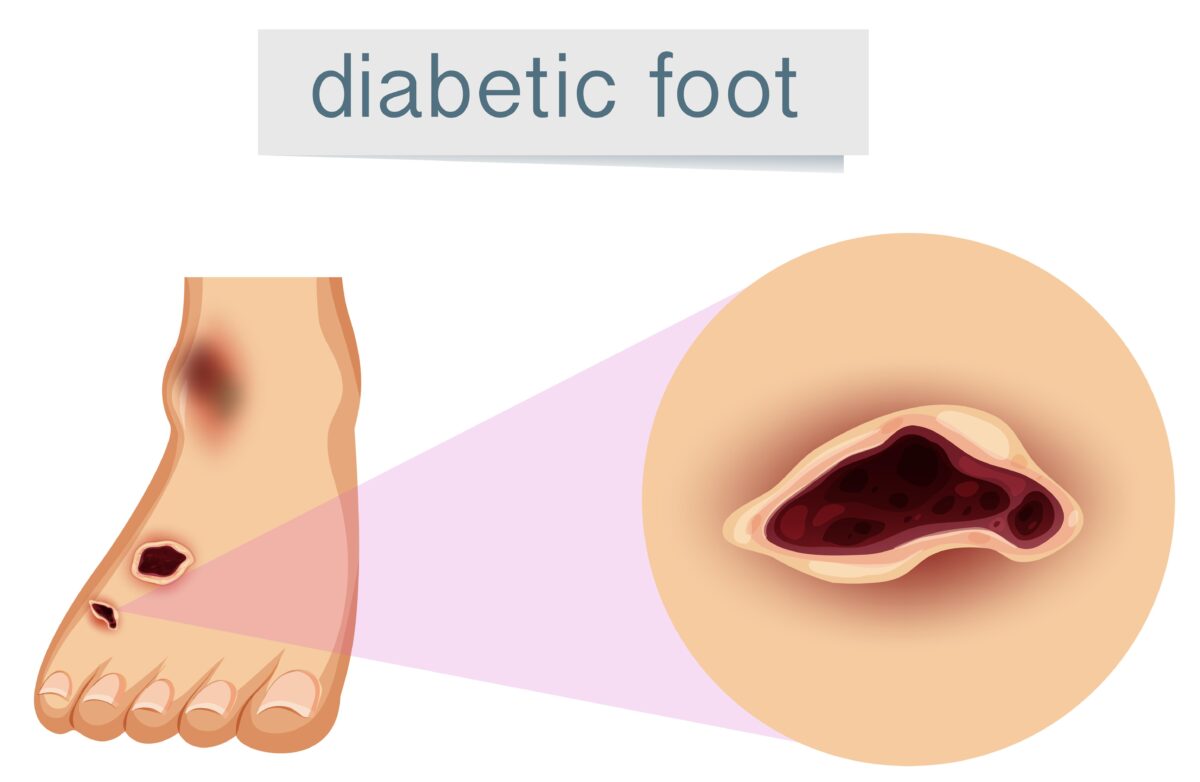Uncontrolled Diabetes leads to diabetic foot. Senior Citizens with diabetes are more prone to it. 30% of hospital admission are due to diabetic foot complications in diabetic patients which are 20% of the total cost incurred on healthcare by a diabetic patient.
As a senior citizen with diabetes, it is important to monitor your feet regularly for any signs of complications related to diabetes. The symptoms of diabetic foot condition can be mild or severe, and if left untreated, can lead to serious complications such as foot ulcers, infections, and even amputation. Here are 6 important symptoms to watch for:
Table of Contents
Numbness or Tingling
One of the most common symptoms of diabetic foot condition is numbness or tingling in the feet. This happens due to nerve damage caused by high blood sugar levels. The damage to the nerves can cause a loss of sensation in the feet, making it difficult to detect any injuries or infections. This numbness can be a warning sign that you need to take extra care of your feet.
Changes in Skin
Another symptom of diabetic foot condition is skin changes. People with diabetes are more prone to dry skin, which can lead to cracks and fissures. When the skin becomes dry, it can cause itching, burning, and pain. You may also notice changes in the color or texture of your skin, such as redness or peeling. It is essential to keep your skin moisturized and hydrated to prevent any complications.
Slow Healing
If you have diabetes, you may notice that any cuts, sores, or blisters on your feet take longer to heal than usual. This happens because high blood sugar levels can reduce the blood flow to the feet, making it difficult for the body to heal the wound. If you notice that your wounds are not healing or are taking longer to heal than usual, it is important to seek medical attention.
Swelling
Diabetes can cause fluid to accumulate in the feet, ankles, and legs, leading to swelling. Swelling is a common symptom of diabetic foot conditions and can make it difficult to wear shoes or walk. If you experience persistent swelling in your feet, it is essential to seek medical attention.
Pain in Feet
If you experience persistent pain in your feet, it may be a sign of nerve damage or other complications related to diabetes. Nerve damage can cause a burning sensation or sharp pain in the feet, which can be debilitating. Pain can also be a sign of an infection or injury, which should be treated promptly.
Change in Toenails
Changes in the color, shape, or thickness of the toenails can also be a symptom of diabetic foot condition. People with diabetes are more prone to fungal infections, which can cause the toenails to become discolored, thickened, or brittle. If you notice any changes in your toenails, it is important to seek medical attention to prevent the infection from spreading.
By being aware of these symptoms, senior citizens with diabetes in India can take steps to prevent diabetic foot complications. It’s important to check the feet regularly for any signs of injury or infection, wear proper footwear, and seek medical attention if any foot problems are detected.
If anyone experiences any of the symptoms mentioned above, prompt medical attention is to be sought. A healthcare provider or podiatrist can also perform regular foot exams to help detect any problems early and prevent them from becoming more severe.





